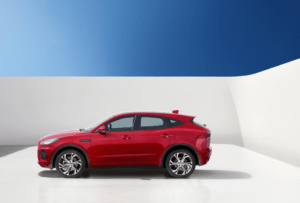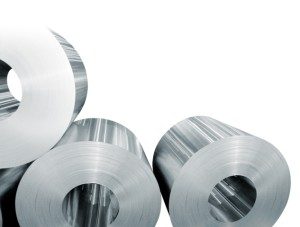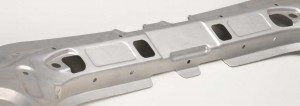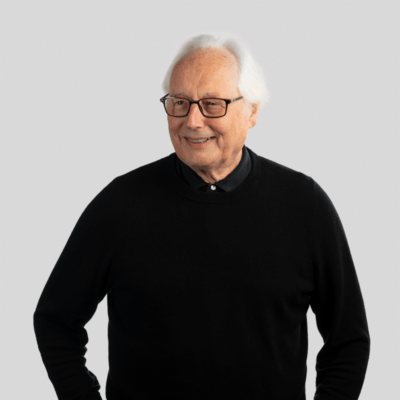Posted on: 9th February 2018 by Prof. Geoff Scamans
This blog post provides a summary of the main aluminium automotive sheet alloys currently in use.
If you’d like more in-depth information, you might want to book a place on our Aluminium Automotive Sheet training course.
AA6XXX automotive sheet alloys
The main alloy used for external panels in the EU is AA6016A. This is an excess silicon alloy that Alusuisse originally introduced to the market. They were the first company to develop this market in Europe. Most of the OEMs, except for Jaguar who use AA6111, have used AA6016A for many years. AA6111 is a stronger version of the family of external panel alloys that Alcan developed in Kingston, Canada. It has been the alloy of choice in North America for many years.
AA6111
AA6111 is basically the alloy AA6082 with a significant addition of copper. The addition of copper enables the alloy to strengthen in the short time available during the bake hardening process. This happens after the cars have been painted in order to cure the paint. In addition to the strong bake hardening response, combinations of work hardening and precipitation hardening can make AA6111 much stronger.

Alcan developed and patented a range of short pre-aging heat treatments that both stabilised the alloy’s mechanical properties and improved the bake hardening response. This treatment also means that the alloy properties remain stable during storage before forming. AA6016A is a less strong but more formable alloy that has a lower bake hardening response than AA6111. The OEMs use AA6016A at relatively thicker gauges compared to AA6111 to get to the same level of dent resistance.
The use of AA6111 enabled Jaguar, and then Jaguar Land Rover, to use thinner closure panels than most of the German OEMs.
Supply of automotive sheet alloys
Most of the major aluminium sheet suppliers such as Novelis, Aleris, Constellium, Hydro and AMAG produce AA6016A. Because the alloy specification is very wide, there are a number of variants which can provide specific properties like higher strength, formability or hemming quality. These variants appear under a range of trade names.
AA6111 was only available from Novelis after they were formed from Alcan’s rolling businesses. However, they now supply Jaguar Land Rover with AA6111 and additional lower copper containing alloys.
Rationalisation

Over the past few years the sheet suppliers have attempted to rationalise the supply of automotive sheet alloys in Europe to variants of AA6016A. This was the alloy supplied for the various Range Rover and Land Rover models that used aluminium closure panels before Jaguar and Land Rover became part of Tata Steel.
AA6016A and AA6111 can suffer from filiform corrosion in service. There is evidence that this can occur earlier for AA6111 than for AA6016. Consequently, this is a concern as filiform corrosion is more likely to occur on AA6111 during the warranty period.
The solution to this problem is to eliminate any rectification using mechanical grinding before vehicles are painted. This is particularly the case at leading edges which can be damaged by the impact of stones during driving. In service you only find filiform corrosion where body panels have been mechanically rectified before painting.
AA6451
To make the alloy situation more complicated Alcan (again in Kingston) developed a compromise alloy, AA6451. It combined aspects of both AA6111 and AA6016A. Novelis initially marketed this alloy for external panels as Ac600, but have now changed this to Advanz™ e600. AA6451 is essentially a lower level of copper (<0.4 wt%) version of AA6111 which can have a copper level of 0.5 to 0.9 wt %. Recently Novelis has suggested that AA6451 (Ac600) is the favoured alloy for production from recycled process scrap.
A second Alusuisse alloy development that started life as a more balanced version of AA6016A, further complicates the situation. It has a lower level of excess silicon and an addition of vanadium rather than titanium. This stems from the original formulation of this alloy as an extrusion rather than a sheet alloy.
Novelis initially tagged AA6451, which has been rebranded as Advanz™ e170 when used for panel applications, as AA6008. Then for several years Novelis referred to it in their presentations as AA6014. More recently (as first noted in late 2013) Novelis has started to define the alloy as AA6005C. The alloy composition can fit within all three of these alloy specifications which have considerable overlap. However, AA6005C does not allow for a deliberate addition of vanadium. Therefore, it may well be that there are no deliberate additions of vanadium to this alloy in its latest iteration. This makes good sense from a recycling point of view, an aspect which would certainly appeal to Jaguar Land Rover.
AA6022 and North America
The re-emergence of Alcoa as an automotive sheet alloy supplier in North America is a further complication. This was in response to the major sheet supply demands from Ford for their F-150 truck programme. The Alcoa outer panel alloy of choice is AA6022. It was first put on the market in 1996 as an alloy with the strength of AA6111 and the formability of AA6016A. However, AA6022 is a low copper alloy (<0.11 wt%) and a low iron alloy (<0.20 wt%) making it difficult to make from recycled stock. The AA6022 remains available from Arconic following the split of Alcoa into upstream and downstream businesses.
AA5XXX automotive sheet alloys

For inner panels and structural sheet applications the favoured alloys are AA5182 and AA5754 respectively.
Novelis has recently started to supply Jaguar Land Rover with RC5754. This alloy has increased allowances for iron, copper and silicon, allowing Novelis to make it from 50% production scrap returned from pressing plants.
The supply balance between AA5xxx and AA6xxx automotive sheet alloys is moving progressively towards the AA6xxx alloys. The OEMs are demanding higher strengths, and these properties are more readily realised using the AA6xxx alloys. The AA6xxx alloys represent at least 80% of the presently supplied volumes.
Future developments
Most of the major suppliers are also developing AA7xxx automotive sheet alloys prompted again by the higher strength demands of the OEMs. However, the AA7xxx alloys have both corrosion and stress corrosion issues to overcome, particularly for alloys that are conventionally weldable. Consequently, the AA6xxx alloys will be the incumbent alloys in automotive applications for many years to come.
If you’re looking for help with an automotive lightweighting project, please visit this page on our web site.
E-PACE images courtesy of Jaguar Land Rover



